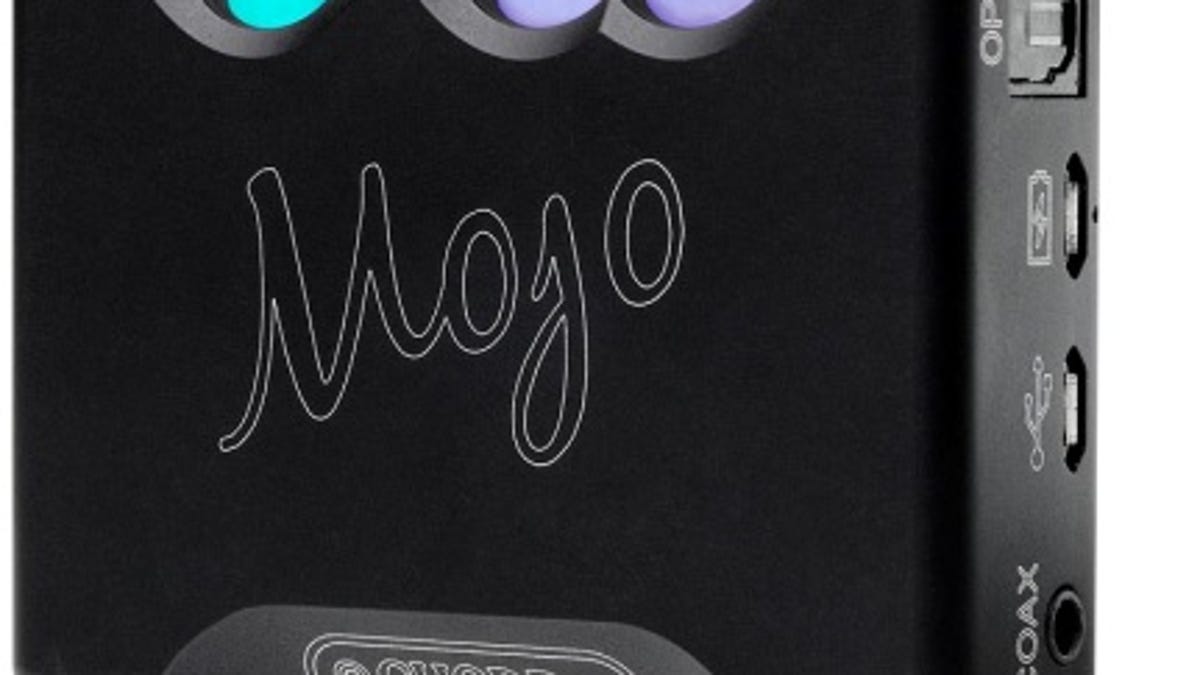Chord Mojo: Maximum sound quality from a tiny digital converter/headphone amplifier
The designed and made in England Mojo will get the best sound from your headphones.

Chord Mojo
If you have a great set of headphones the little Chord Electronics Mojo digital converter/headphone amp is well worth considering. I wasn't expecting Chord to radically shrink the size and price of their popular high-end Hugo (US $2,495, £1,400 in the UK and AU$2,495 in Australia) digital converter, but that's exactly what the Mojo does.
To put Mojo's abilities in perspective I compared it with the Apogee Groove converter/headphone amp. The Groove is an overachiever, but the Mojo is even better. Listening to Punch Brothers' "Phosphorescent Blues" all-acoustic bluegrass-infused album Mojo developed a more soul-satisfying sound. The instruments had more body and natural timbre than they did over the Groove. The breadth and depth of Angelo Babalamenti's sumptuous score for the film "Blue Velvet" was presented in all its glory over the Mojo, and reigned-in when played over the Groove.
The backlit volume up/down buttons change color in subtle gradations of hue when you change volume, the on/off power button's color changes to indicate the sample rate and type of file being played. Mojo has USB, optical and coaxial digital inputs, and two 3.5mm headphone jacks, which can be switched over to fixed line-level analog outputs that can be hooked up to a home audio system. Mojo was designed and made in England, and its petite 3.2 by 2.4 by 0.9 inch (82x60x22mm) body is precision machined from aircraft-grade aluminum, and finished in matte black.
You can hook Mojo up to any device with a coaxial or optical digital output, like an Apple TV, CD, DVD or Blu-ray player and via USB to iPhone, Android or Windows phones. Mojo can play up to ultra-high resolution 768kHz/32bit, and/or quad DSD 256 files. Mojo has two USB ports, so you can charge the battery as you listen -- charge time is 4 hours -- and for portable use you'll get up to 10 hours of playtime.
Chord Mojo
As I settled in and spent time with Mojo while streaming lossless FLAC files from Tidal, the sound's effortless detailing and "air" made the strongest impression. Standard 16 bit/44.1 kHz files sounded like high-resolution files. Ah, but bona-fide high-resolution files were even better!
High-res files with my Hifiman HE1000 headphones were spine-tinglingly beautiful with Mojo! Tough to drive headphones like my very high-impedance (600 ohm) Beyerdynamic T1 truly shined.
Even the Jerry Harvey Roxanne in-ear headphone were also right at home with Mojo. So no matter how good your headphones are Mojo will be up to the task of providing the sound quality you paid for.
To finish up a popped on a pair of more moderately priced Oppo PM-3 headphones, and checked out Elliot Smith's "XO" album. The clarity and dynamic contrasts of his mostly acoustic music were thrilling. With St. Germain "Boulevard" CD the low bass wallop and definition were outstanding.
At $599, £399 UK, and AU$899 in Australia the Chord Mojo is more expensive than the Apogee Groove and AudioQuest DragonFly digital converter/headphone amps, but Mojo sounds significantly better. Still, Mojo only really makes sense after you've invested in high-end headphones, ones at least as good as the Oppo PM-3 or Hifiman HE400S. The better your headphones the more you'll appreciate Mojo's magic.

